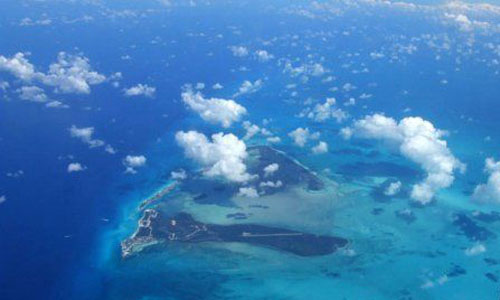Newton's laws explained so many things—the slosh and roll of ocean tides, the motions of planets, why cannonballs trace a particular trajectory before thudding back to Earth, why we aren't flung into space as the planet spins beneath us at hundreds of miles an hour—that it took a while for all their implications to seep in. But one revelation became almost immediately controversial.
牛頓定律解釋了許許多多事情--海洋里潮水的飛濺和翻騰;行星的運動;為什么炮彈著地前沿著一條特定的彈道飛行;雖然我們腳下的行星在以每小時幾百公里的速度旋轉,為什么我們沒有被甩進太空--這些定律的全部意義要費好大工夫才能領會。但是,它們揭示的事實幾乎馬上引發了爭議。

This was the suggestion that the Earth is not quite round. According to Newton's theory, the centrifugal force of the Earth's spin should result in a slight flattening at the poles and a bulging at the equator, which would make the planet slightly oblate. That meant that the length of a degree wouldn't be the same in Italy as it was in Scotland. Specifically, the length would shorten as you moved away from the poles. This was not good news for those people whose measurements of the Earth were based on the assumption that the Earth was a perfect sphere, which was everyone.
這意味著,地球不是滴溜滾圓的。根據牛頓的學說,地球自轉產生的離心力,造成兩極有點扁平,赤道有點鼓起。因此,這顆行星稍稍呈扁圓形。這意味著,1度經線的長度,在意大利和蘇格蘭是不相等的。說得確切一點,離兩極越遠,長度越短。這對那些認為地球是個滴溜滾圓的球體,并以此來測量這顆行星的人來說不是個好消息。那些人就是大家。
For half a century people had been trying to work out the size of the Earth, mostly by making very exacting measurements. One of the first such attempts was by an English mathematician named Richard Norwood. As a young man Norwood had traveled to Bermuda with a diving bell modeled on Halley's device, intending to make a fortune scooping pearls from the seabed. The scheme failed because there were no pearls and anyway Norwood's bell didn't work, but Norwood was not one to waste an experience. In the early seventeenth century Bermuda was well known among ships' captains for being hard to locate. The problem was that the ocean was big, Bermuda small, and the navigational tools for dealing with this disparity hopelessly inadequate. There wasn't even yet an agreed length for a nautical mile. Over the breadth of an ocean the smallest miscalculations would become magnified so that ships often missed Bermuda-sized targets by dismaying margins. Norwood, whose first love was trigonometry and thus angles, decided to bring a little mathematical rigor to navigation and to that end he determined to calculate the length of a degree.
在半個世紀的時間里,人們想要測算出地球的大小,大多使用很嚴格的測量方法。最先做這種嘗試的人當中有一位英國數學家,名叫理查德·諾伍德。諾伍德在年輕時代曾帶著個按照哈雷的式樣制作的潛水鐘去過百慕大,想要從海底撈點珍珠發大財。這個計劃沒有成功,因為那里沒有珍珠,而且諾伍德的潛水鐘也不靈,但浪費一次經歷的也不止諾伍德一個人。17世紀初,百慕大在船長中間以難以確定位置著稱。問題是海洋太大,百慕大太小,用來解決這個差異的航海儀器嚴重不足。連1海里的長度還都說法不一。關于海洋的寬度,最細小的計算錯誤也會變得很大,因此船只往往以極大的誤差找不到百慕大這樣大小的目標。諾伍德愛好三角學,因此也愛好三角形,他想在航海方面用上一點數學,于是決定計算1度經線的長度。











